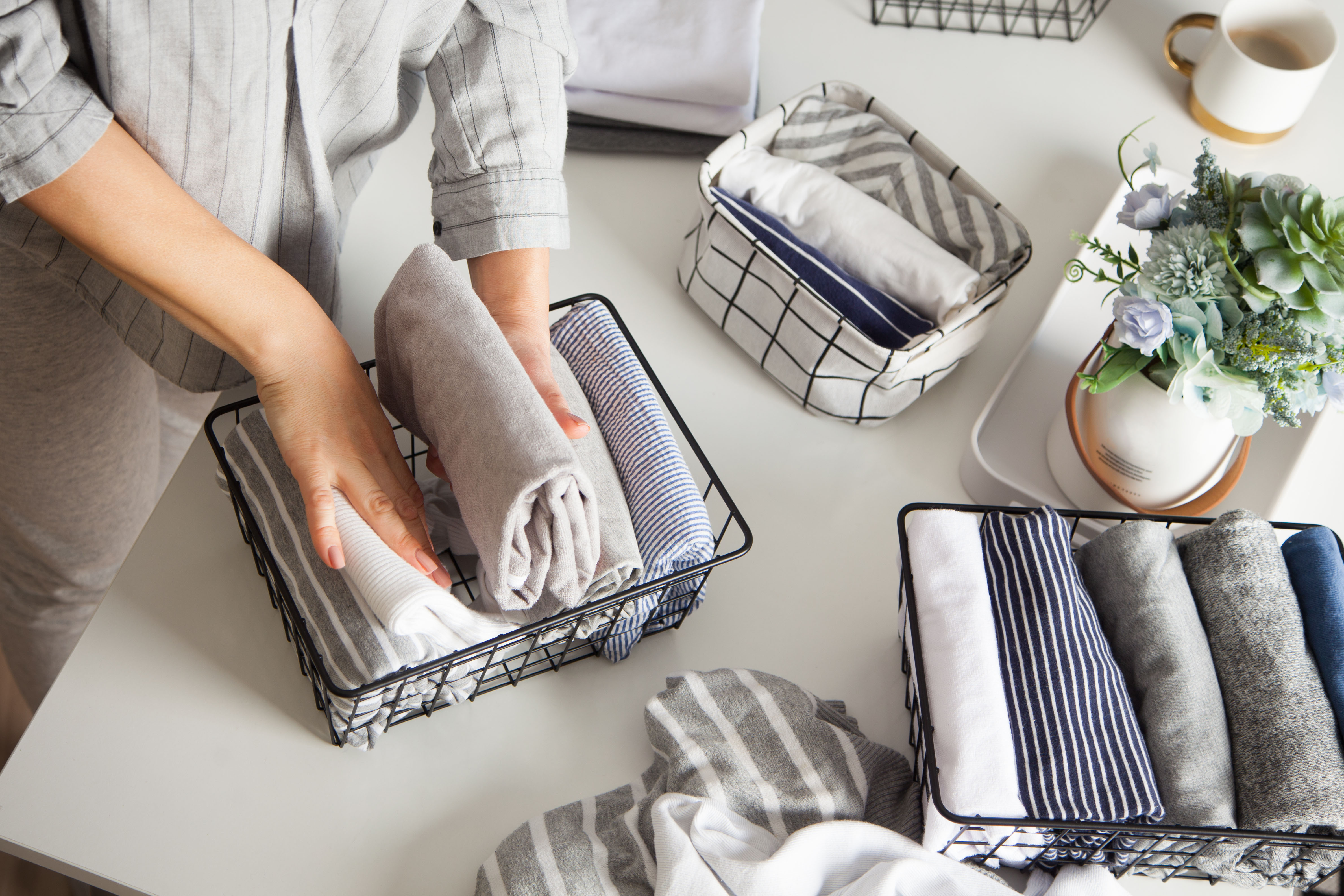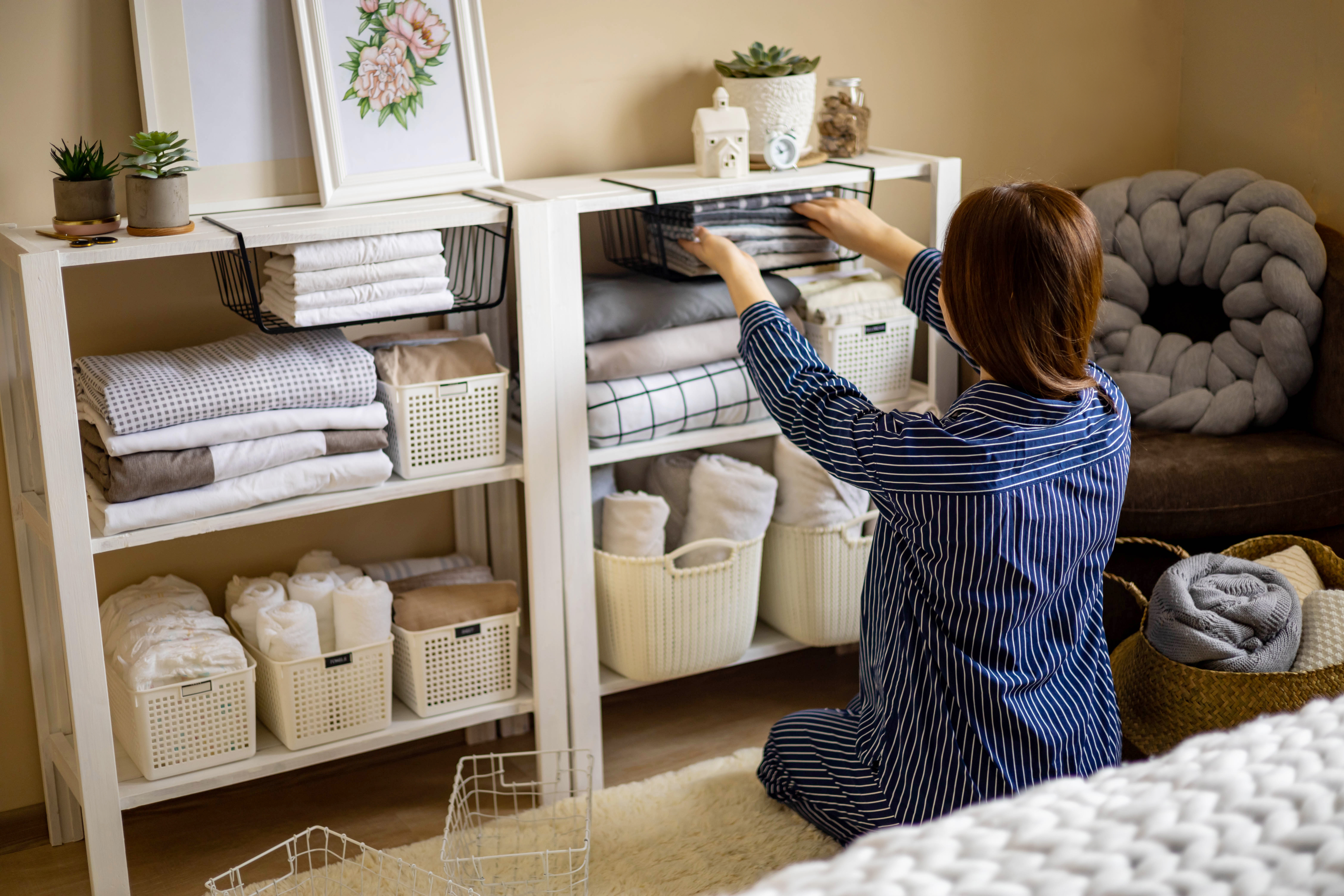How to keep tidy with the Marie Kondo method?
We show you how to keep tidy with Marie Kondo's method. Don't miss the best tips and enjoy keeping your home tidy and clean.
TRIED AND TESTED
Share

The change of season prompts many to carry out a thorough cleaning of the house in preparation for autumn. This includes, as a general rule, going through and cleaning out cupboards, clothing and other personal belongings. But how exactly do we do it without despairing along the way? One of the methods to have gained increasing popularity in recent years is the Konmari method, devised by the popular Japanese businesswoman Marie Kondo.
¿Qué es el método Marie Kondo?What is the Marie Kondo method?
Marie Kondo is a maestro of order. Her book The Life-Changing Magic of Tidying Up is a worldwide bestseller, and Kondo even starred in a 2019 Netflix show about her particular way of tidying, which has already revolutionised the lives of many people thanks to her tricks, tips and advice on the subject.
The frenetic pace of life, work, childcare, and the little social life we can sometimes afford make it very difficult for us to focus on keeping the house tidy. However, Marie Kondo says that this can be easy, and that all you have to do is follow a few simple rules. Fundamentally, these rules involve discarding what does not make us happy, and folding clothes vertically. Here's what the Konmari method tells us:
- Commit to keeping things tidy. If we want to bring about real change in our lives, we have to put aside distractions and procrastination.
- Imagine your ideal life. If we imagine our house tidy, we feel good. So you have to try to turn that thought into a reality.
- Throw out before tidying. Just as there is no point in tidying up without cleaning, so we must discard everything that we no longer have any use for before starting to clean thoroughly. Marie Kondo advises that we should check the clothes we haven't worn in years: if they don't make us happy, we should say goodbye to them (better to donate them rather than throw them away, of course).
- Categorise. A good way to tidy is to do it by categories: type of clothing, colours, seasons... instead of by place of storage.
- Create order within the order. The Konmari method also specifies a particular sequence when we come to tidy: first come clothes, then books, then papers and lastly various objects and pieces with sentimental value (Kondo states that when we reach this last step we will be trained and ready to face it).
- "Does it make you happy?" is the key question: almost the most important thing about Marie Kondo's method. If yes, we keep it; if not, it is better not to keep it and give priority to other things that really do make us happy.

Marie Kondo method: keeping your clothes organised
Marie Kondo is clear about how to organise clothes. The most important thing, she says, is that the garments are folded vertically. To do this, you have to fold each garment into rectangles and place it upright, and not horizontally, as this will take up less space and also allow us to have a clearer view of everything we have and where it is. We should therefore try to hang as few clothes as possible, since we can fit more folded clothes in that space; in fact, it is recommended that only delicate shirts or coats be hung on hangers. The longest and heaviest should be placed on the left, with the lightest on the right. As for folded clothes, lighter shades should go in front.
When it comes to getting rid of clothes, we must first discard those from other seasons because we won't currently need them. We continue with seasonal clothing and then with accessories (we can, for example, store bags inside other bags, but never more than two and always with the handles showing outside). Typically, we will end up keeping only a third of the clothes we had.
Marie Kondo helps you tidy your wardrobe without drawers
Does Marie Kondo's method work in a wardrobe without drawers? The answer is yes. And you can always use translucent plastic boxes or rattan baskets to store clothes in vertically if your wardrobe does not have drawers. You can also install removable metal baskets (which will enable you to see the clothes more comfortably) or place the shoes in shoe organisers. Similarly, you can also install trouser racks so as to see them at a glance. If more space is needed, adding an extra bar may be a good option. Marie Kondo also recommends placing boxes or baskets with items we use less frequently at the bottom of the wardrobe. So you see: no need for drawers, just storage elements (like boxes) to tidy up our closet.

Tidy your shoes with the Marie Kondo method
The Marie Kondo method also covers shoes. To carry out a thorough cleaning of your shoe cupboard, the Japanese guru suggests taking them all out and laying them on the ground. Then, we classify them: heels, sandals, boots and ankle boots... so that we can visualise everything and making a selection is easier. First, like with clothing, we start with shoes from other seasons and then move on to the present.
If a shoe is overly worn, broken or hurts us, it is best to remove it from our collection. We say goodbye to them, thank them for their service and proceed. After a first general triage, it's time for some real introspection. We assess our outfits and really consider what we wear most often. We then place these items in an accessible place in our wardrobe, such as the bottom of the closet or the shoe rack in the hallway. Less frequently used outfits, on the other hand, will go at the top of the wardrobe. We can also separate shoes by colour, shape or brand. The heavier ones should go at the bottom, and the lighter ones, at the top. Boxes can also help us keep everything tidier.
Organise your suitcase with Marie Kondo
In addition to the above, the Marie Kondo method also works with suitcases. Kondo recommends packing all in one go, shortly before the trip, to avoid adding and removing things. Clothing and footwear, personal care items, documentation (passports, cards, insurance...) and electronic devices must all be separated in the suitcase. We need to fold all the clothes and pack them vertically to avoid wrinkles and deformations, and place shoes or jeans at the bottom so that, when the suitcase is standing, they take the weight of other objects. Items that are more delicate and those prone to wrinkling, such as suits or dresses, go horizontally on top of everything.
Shoes, on the other hand, must be placed in cloth bags, soles facing each other. We take advantage of all the free spaces, finally, to pack accessories and underwear.
With Marie Kondo, a tidy home will never be out of reach again.






